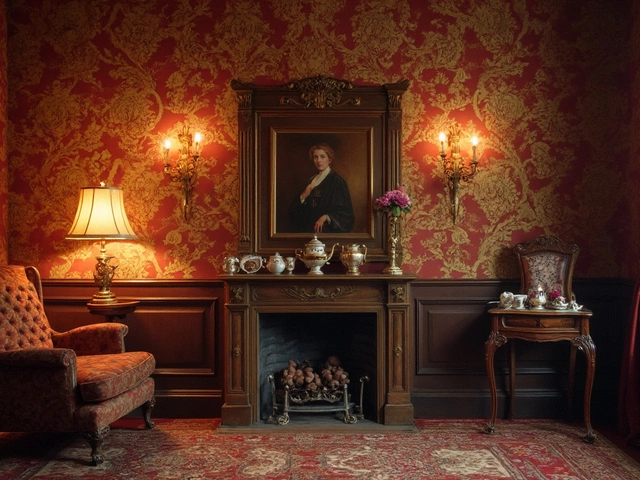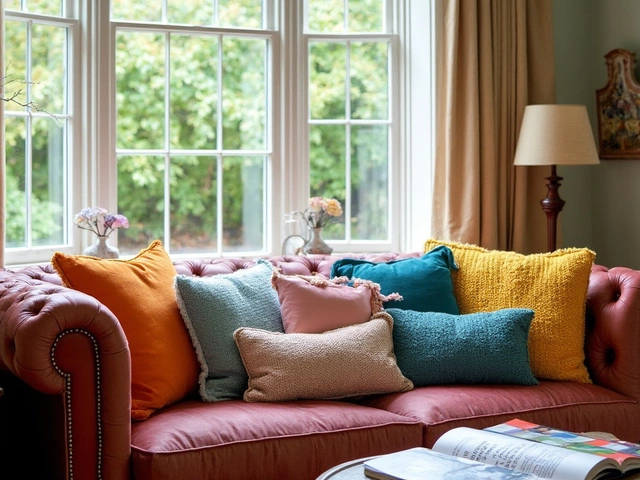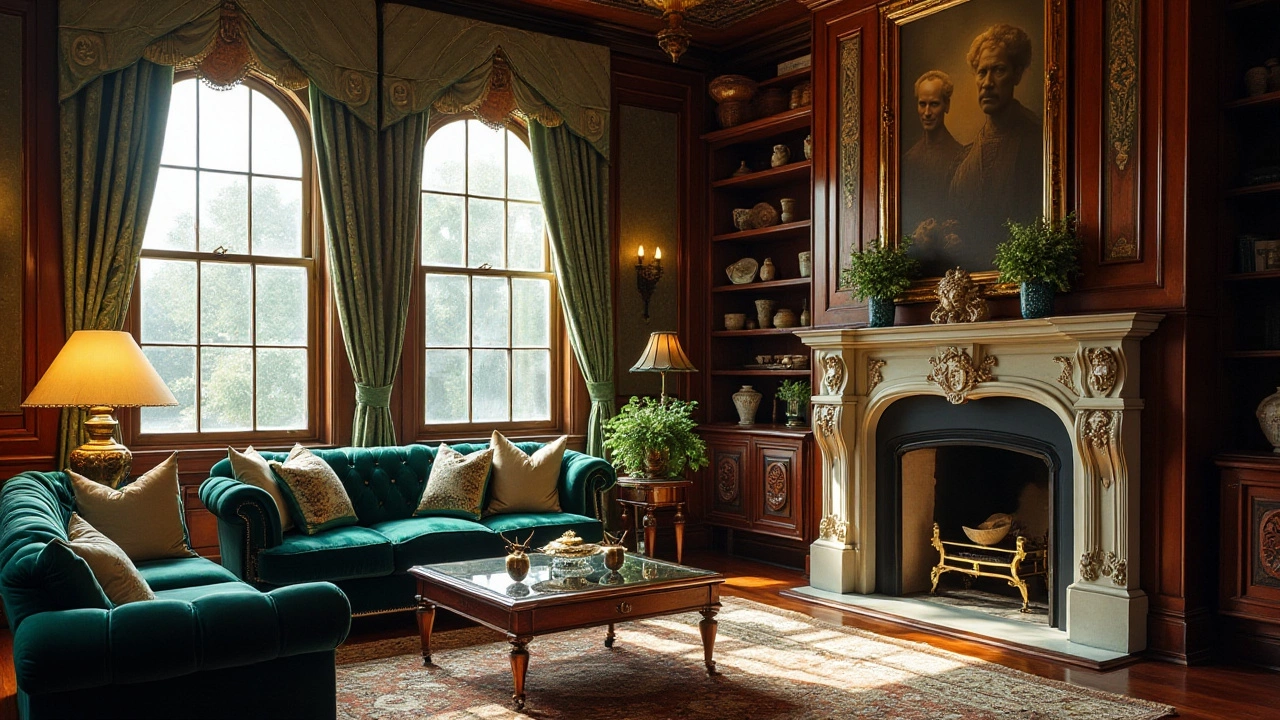
What exactly makes a space luxurious? Is it the plush velvet drapes or the glint of gold accents? Luxury interior design transcends simple opulence and ventures into the realm of bespoke artistry. It’s about crafting spaces that tell a story through the use of exquisite materials and carefully curated pieces that reflect personal style.
Delving into the world of luxurious interiors reveals a fusion of quality and history, where every choice is deliberate, and every detail adds to the ambiance. The appeal lies not just in the visual impact but in the sensorial experience provided by an environment that envelops you in comfort and style. This article aims to guide you through the intricate details and subtle nuances that define this exclusive design approach.
- Defining Luxury Interior Style
- Key Elements of Opulent Design
- The Role of Materials and Textures
- Personalization and Bespoke Furnishings
- Tips for Creating a Luxurious Space
Defining Luxury Interior Style
Luxury interior design is not simply about the ostentatious display of wealth through possessions; it’s a careful orchestration of beauty and function that stands the test of time. At its core, luxury interior design emphasizes the unique and the bespoke, focusing on materials that speak of authenticity and artisanship. It's about creating a haven that reflects personal tastes and lifestyle, a respite from the mundane. The key lies in balance, where aesthetic and practicality harmonize effortlessly. You may find the tantalizing mingling of polished marble surfaces with the warmth of aged wood, or the softness of silk drapery with the strength of wrought iron accents. Each element is a brushstroke in the masterpiece of elegant living.
Luxury spaces often draw inspiration from classic styles, blending them with modern trends to create something uniquely timeless. Take, for example, the historical elegance of Baroque or Rococo that informs many opulent interiors today. This fusion of the old with the new breathes life into an eclectic yet cohesive style framework. Indeed, the use of elegant furnishings intertwined with rich color palettes and intricate patterns showcases the limitless boundaries within this design style. The tactile experience of sumptuous textures, whether it's a hand-knotted Persian rug or a plush leather sofa, invites an intimate connection with the space. Such design does more than appeal to the visual senses; it engages the entire sensory suite, enveloping individuals in a world of comfort and sophistication.
"Luxury must be comfortable, otherwise it is not luxury," as Coco Chanel eloquently put it, summarizing the essence that luxury focuses as much on feeling as on looks.
Personalization and Identity
While opulence is an obvious aspect, the underlying philosophy of luxury interior design is deeply personal. It’s not about filling a room with the most expensive items but curating spaces that resonate on a personal level. Engaging with professional designers who understand how to leverage bespoke elements enhances this effect. Options like custom-made drapery, personalized art collections, or unique lighting fixtures all contribute to crafting an individual aesthetic. The secret sauce here is personality; every room should tell a story, reflect a journey, and evoke emotion. This aspect of personalization extends beyond just visual appeal and includes the comfort and usability of each space.
The Role of Technology
Modern luxury interior design doesn’t shy away from embracing technology. On the contrary, it incorporates it in seamless ways that add convenience and elevate the living experience. Smart technologies found in luxury homes often blend invisibly with design elements, such as automated lighting that adjusts with the time of day, or concealed audiovisual systems that turn a lounge into a home theater at a touch of a button. Not only do these advancements expand what is possible, they do so while maintaining the pristine aesthetics expected of upscale home style.
As future trends in both design and technological capabilities evolve, the definition of luxury is set to expand. It remains, however, an ever-present celebration of skilled craftsmanship, high-quality materials, and the thoughtful integration of personal taste. Through this marriage of tradition and innovation, the true essence of luxury interior design is realized.
Key Elements of Opulent Design
When it comes to achieving a truly luxury interior design, the devil is in the details. Opulent interiors often begin with a thoughtful approach to layout, which ensures a harmonious flow and utilizes every inch of space effectively. Consider the placement of each element not only in terms of beauty but function and comfort, ensuring that the room's aesthetic does not compromise its livability. The relationship between furniture, lighting, and accessories needs to resonate in perfect harmony to create a cohesive ambiance. The strategic positioning of mirrors, for instance, can make a space feel larger and more cohesive, reflecting light and expanding openness while adding to the room's grace.
Lighting plays a pivotal role in any luxurious setting. The interplay of natural and artificial light can be effectively achieved through layered lighting—combining ambient, task, and accent lighting to highlight the room's best features and add depth. Chandeliers and bespoke light fixtures are particularly popular, anchoring spaces with their artistic flair and serving as statement pieces in their own right. By carefully choosing the lighting's intensity and warmth, designers can enhance the room's mood or create a dramatic focal point that captures the essence of opulent decor.
The choice of materials is critical in luxury design, focusing on textures and finishes that exude quality and sophistication. High-end stones like marble and onyx, rich woods like mahogany and teak, and metals such as brass and gold are hallmarks of opulent aesthetics. Each material should be carefully selected and used purposefully, whether it’s for the flooring, countertops, or furniture. Upholstery fabrics like velvet and silk, known for their elegance and luxurious feel, are often used to upholster furnishings, adding an extra layer of plush comfort and richness.
Furniture in a luxury interior design scheme is typically bespoke, designed to fit the precise needs and dimensions of the space. Bespoke pieces offer the chance to incorporate personal tastes while maintaining the room's overall theme. They become heirlooms that tell the story of the homeowner's journey and taste. Art is also integral to opulent design—carefully curated pieces that resonate with the space's color palette and theme bring the room to life, often acting as conversation starters.
"The details are not the details. They make the design." - Charles Eames
Color palettes in opulent designs are typically understated yet commanding, like soft neutrals paired with deep hues or refreshing whites touched with metallics. These colors act as canvases that highlight more intricate elements of the decor, rather than overtaking the space. Texture and contrast play key roles here, often combining different materials and finishes for a dynamic yet cohesive result. Combining lush materials, impeccable craftsmanship, and smart design choices creates an interior that truly epitomizes upscale home style.
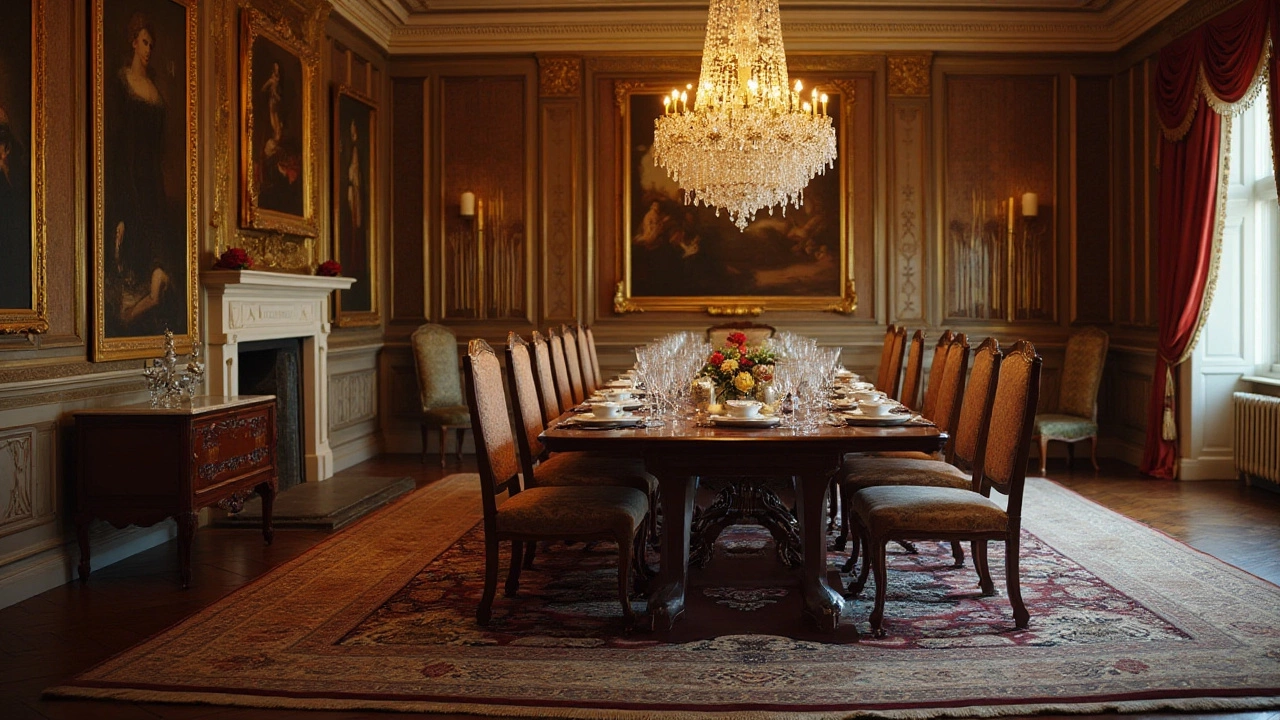
The Role of Materials and Textures
Understanding the significance of materials and textures is pivotal for achieving an authentic luxury interior design. The transcendent nature of opulence in a space often stems from the detailed interplay between tactile and visual elements. High-end materials like Italian marble, rich walnut wood, and handwoven textiles not only stand out visually but also offer an unmatched tactile experience. The juxtaposition of different textures, such as smooth silk against rustic leather, creates layers of interest, drawing people into an enriched aesthetic journey. The meticulous choice of such materials reflects a dedication to quality and craftsmanship, which is the heartbeat of luxury designs.
The magic often happens when these textures are layered intricately. For example, pairing raw, textured stone walls with polished brass fittings, or combining plush velvet upholstery with a sleek glass coffee table, not only amplifies the space's aesthetic balance but also adds depth. These thoughtfully considered pairings transcend typical home decoration into the realm of art. As designer Terence Conran once noted,
"The materials that you use in your interiors create the foundation and mood of the space."His observation underlines the importance of selection in crafting timeless elegance.
Exploring Material Authenticity
Authenticity in material selection is no mere trend; it is a hallmark of enduring design. Using genuine materials such as Burmese teak or Murano glass ensures that the beauty of natural imperfections is celebrated rather than masked. The choice of authentic materials conveys a commitment to sustainability and conscious luxury, appealing to discerning individuals who value both aesthetic and ethical considerations. This mindful approach extends to incorporating reclaimed and upcycled elements, infusing spaces with history while minimizing environmental impact.Deftly weaving various textures within a single room showcases a mastery of design principles. Imagine a room where cool, smooth marble flooring sets off the warmth of woven cashmere throws or where a rugged stone fireplace complements the soft draping of velvet curtains. Such contrasts can transform a living area into an expressive haven that exudes opulent decor. Additionally, the reflective nature of polished surfaces like high-gloss lacquered wood or mirrored panels can enhance natural light in a room, creating a brighter, more inviting atmosphere.
Incorporating Textures Through Layers
The art of layering textures invites occupants to not just appreciate luxury but to feel it. Layering can be achieved through a combination of soft furnishings like pillows, throws, rugs, and wall coverings. This involves a delicate balance; too much can overwhelm, while too little might fall flat. A curated collection of textures grants tactile interaction which is an integral part of the living experience. Integrating textiles from different cultures, each with its intricate craftsmanship, can also add a unique touch to the interior. The thoughtful layering of textures paves the path for a home environment that is as comforting as it is luxurious.The Power of Innovative Textures
Innovation has pushed the boundaries of traditional materials, allowing for creative textures that enhance luxurious interiors. For instance, 3D-printed ceramics and textiles offer unique possibilities in wall coverings and decorative elements that were previously unimaginable. These avant-garde materials capture the imagination and present an opportunity to blend futuristic ideas with classic luxury sensibilities. Using innovative textures wisely can result in spaces that feel both familiar and fresh, timeless yet modern.Personalization and Bespoke Furnishings
In the realm of luxury interior design, personalization and bespoke furnishings stand at the heart of what distinguishes a space as truly unique. Rather than opting for mass-produced items, individuals with a penchant for luxury prioritize pieces that tell a story through artistry and customization. Each component of a room is meticulously curated to reflect personal tastes, history, and heirloom preferences, yielding an interior that speaks an individual's aesthetic language. Bespoke furnishings go beyond simple aesthetics; they incorporate functionality tailored exactly to the lifestyle and needs of the inhabitant.
The allure of bespoke furnishings lies in their ability to transcend trends. While the creative process might start with a specific design inspiration, the bespoke approach ensures each piece aligns perfectly with the client’s vision, offering timeless appeal. Skilled artisans often spend weeks, if not months, on these creations, embedding a level of craftsmanship that factory pieces simply cannot replicate. This painstaking dedication to craft ensures that each chair, table, or fixture becomes a work of art, narrating a story of its own and adding an irreplaceable character to the home environment.
In this bespoke world, customization knows no bounds. From custom-made cabinetry that optimally uses space in a city studio apartment by accommodating all household essentials to tailor-fit rugs that complement the intricate patterns of wall art, personalization acts as the binding agent of luxury interiors. Consider the house of Chanel at 31 rue Cambon, where meticulously crafted furnishings combine high fashion with immediate functionality, illustrating how exquisite interiors provide both beauty and ease of use.
Renowned interior designer Kelly Wearstler aptly captures this ethos:
"Bespoke furnishings aren't just items; they're individual expressions of art and culture that turn a house into a home's ultimate storybook."This philosophy extends to the smallest design elements, such as the bespoke handles on a cabinet, lovingly cast from personalized molds to reflect the nuances of the owner's taste. The seamless melding of form and function not only indulges one’s visual sense but serves everyday practicality, subtly intertwining extravagance with utility.
Elegant furnishings often incorporate rare materials, sourced specially for bespoke projects. Consider the use of rare woods like Brazilian Rosewood or exotic marble inlay that enriches the setting with distinct textures and a historical narrative. The logical counterpart of selecting these unique materials is ensuring their sustainability, pushing the design world towards ethically sourced, indigenous resources while still offering refinement. Clients and designers engage in an intimate dialogue, crafting pieces that will become treasures handed down through generations, embodying family heritage and personal achievements.
The harmony between bespoke furnishings and personalization in upscale home style defines a space by turning it into a reflection of the people who dwell within. It's about weaving inspiration from life’s unique tapestry into the fabrics, colors, and shapes that compose each room. Whether it's an opulent crystal chandelier hanging precisely above a handcrafted dining table or a set of leather armchairs dyed to match the client’s family crest, luxury interiors through bespoke designs celebrate individuality and craftsmanship at its finest.
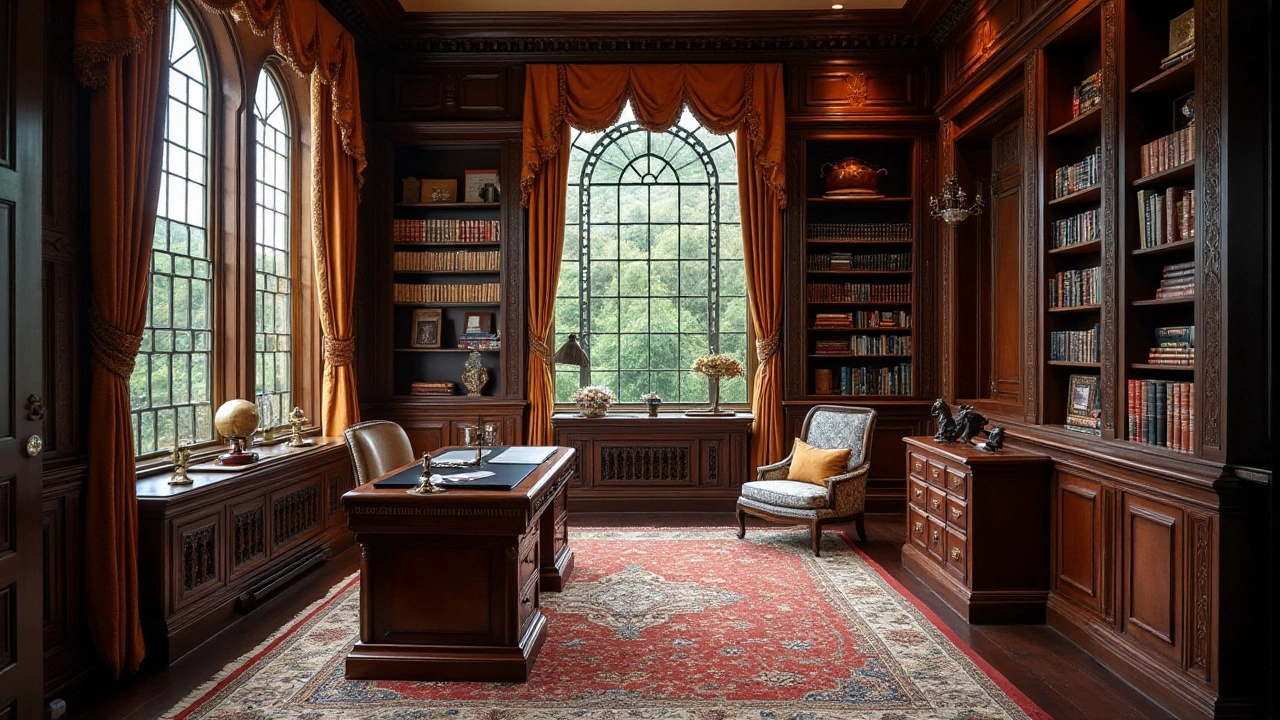
Tips for Creating a Luxurious Space
When it comes to crafting a luxurious space, attention to detail is paramount. It’s not just about accumulating the finest pieces money can buy, but about curating an environment where every element is deliberately chosen for its quality and elegance. Start by focusing on a theme that speaks to your personal taste, whether it's a modern opulence with clean lines and high-gloss finishes or a more classic approach with antique touches and rich textures. Lighting plays a critical role in achieving luxury; consider chandeliers, statement pendants, and strategically placed sconces to provide both illumination and artistic flair. Remember, the right lighting fixture can transform even the simplest room into a spectacle of elegance.
Texture is another vital aspect of luxury interior design. Combine different materials like silk, velvet, and cashmere to create visual interest and tactile comfort. Soft furnishings such as cushions and throws are not only functional but also serve as an opportunity to inject color and vibrancy while remaining plush. Layering these textures will give depth to your interiors, making them feel warm and inviting yet sophisticated. Don’t shy away from adding elements of surprise, like a boldly patterned rug or a velvet-clad wall, to draw the eye and add that touch of uniqueness that truly sets your design apart.
You should also consider investing in art pieces or sculptures that resonate with you personally. Art has the power to uplift a space, infuse character, and tell a story, moving your design beyond mere aesthetics to convey a deeper narrative. Whether it’s a contemporary piece or an old masterpiece, art can define the mood of your interiors. Personalization can be taken further by incorporating bespoke cabinetry or custom-built furniture tailored to your space’s dimensions and your specific needs, thus ensuring both functionality and unparalleled elegance.
The color palette you choose can dramatically influence the ambiance of your home. Opt for neutral tones, like taupes, creams, and greys, to create a serene backdrop that allows your fine furnishings and artworks to take center stage. These hues often convey a sense of understated luxury. Accent colors can be introduced sparingly through accessories such as cushions or floral arrangements to add a pop without overpowering the room. An interesting fact, according to acclaimed designer Kelly Hoppen,
“Neutral colors create a timeless aesthetic that beautifully adapts to changing moods and seasons.”
Finally, remember that modern luxury is about balance and harmony. Spaces should not only look exquisite but feel harmonious too. This harmony is achieved through the thoughtful arrangement of furniture to promote flow and a balance of visual weights throughout the space. Consider all the senses; a luxurious space has a distinct scent, perhaps through scented candles or subtle fragrances, and often a quietness that elicits calm. In fact, a study by the International Journal of Architecture concluded that multi-sensory design encourages a profound emotional connection with our living spaces. Follow these tips, and you’ll be well on your way to creating a truly luxurious interior that resonates with your personal style while offering comfort and sophistication.



